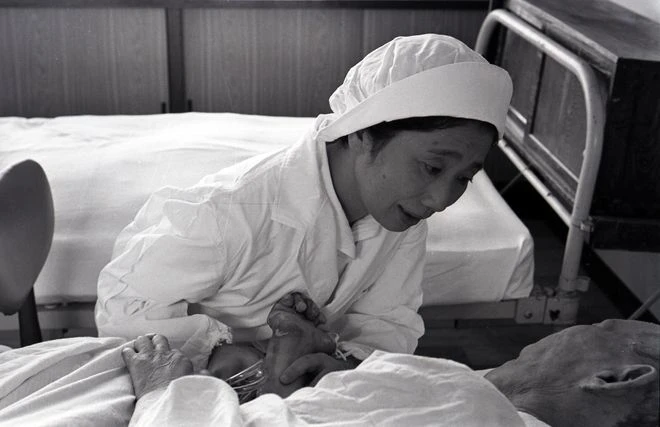English Blog
Kintsugi – Scars of Gold
Kintsugi 金継ぎ is the Japanese art of putting broken things back together. It literally means "putting together in gold." Kintsugi is an intricate repair technique in which ceramic pieces are put back together to form a new whole - the "scars" are then covered with real gold. Behind this is the idea that all things are unique - and breakage is not the end.
Ikigai: The Japanese Art of Fostering Mental Resilience and Pursuing Meaning in Life
Explore the profound philosophy of Ikigai and its implications on mental resilience. The article delves into how the pursuit of meaning, as emphasized by Viktor E. Frankl, guides us to our existential origins. We explore how Ikigai transcends social status and career aspirations, focusing on enriching our lives beyond material wealth. The narrative also highlights key insights from Motoki Tonn on Ikigai and resilience. It outlines how Ikigai can bolster our resilience, emphasizing its alignment with logotherapy principles. It further delves into the health benefits of Ikigai, backed by scientific research demonstrating its positive impact on physical, mental, and spiritual health. We also discuss the value of establishing meaningful rituals, embodying Ikigai in daily activities, and fostering mental resilience by utilizing our inherent gifts and talents. In summary, the content provides a comprehensive overview of the concept of Ikigai, its role in promoting mental resilience, and the diverse benefits it offers for overall well-being.
Ikigai, IDG and SDG
The Inner Development Goals (IDG) offer a framework designed to support personal growth and contribute to the achievement of the Sustainable Development Goals (SDGs). With pillars focusing on Being, Thinking, Relating, Collaborating, and Acting, the IDG framework emphasizes essential skills and mindsets for individual development and positive societal impact. Aligned with the seven dimensions of Ikigai, such as life satisfaction, change and growth, a bright future, resonance and relationships, freedom, self-actualization, and meaning and value, the IDG framework provides a path to unlocking one's potential while making a meaningful difference. Explore the 23 skills and qualities within the IDG framework and their connection to the SDGs, and embark on a journey of personal growth and global progress.
Mieko Kamiya – the founder of Ikigai
Mieko Kamiya was a remarkable woman of the last century. She translated works by Marcus Aurelius, Michel Foucault, Virginia Woolf, and Khalil Gibran. Fluent in German, French, and English, she studied in the U.S. and Geneva, attended Bible school, and later worked as a clinical psychiatrist treating leprosy patients.
Check out our manga video, where we had fun experimenting with artificial intelligence voices. It's an interesting project!
Mieko Kamiya – the Founder of Ikigai Psychology
For us, Mieko Kamiya is a heroine. She also became famous in Japan. The TV channel NHK dedicated its own series to her. An animated film about her life was even developed.
Beyond Japan, she has remained unknown in view of her significant work. Yet she laid the foundations of Ikigai research and Ikigai psychology.
The Ikigai is very fashionable today - due to a confusion with a Venn diagram by the Spaniard Andrés Zuzunaga, many believe that this is the Japanese Ikigai.
In truth, however, the Ikigai is much more complex and in-depth than the famous Venn Diagram. Ken Mogi speaks of a spectrum. The Ikigai is "as complex as life itself".
Mending the pieces: IKIGAI and Kintsugi belong together
Why are we discussing Ikigai and Kintsugi at Finde Zukunft?
The Japanese Ikigai philosophy has a connection to Kintsugi.
Kintsugi is a Puzzle. Life is, too.
Kintsugi is a puzzle, life is too,
broken pieces, mended with gold,
each scar tells a story, old
of pain and growth,
of what we've been through.
Kintsugi invites us to make a pause.
Ten years ago, we made a short film about the art of Kintsugi in Tokyo and Kyoto. When I first learned about Kintsugi, I discovered that the repaired cups often need to be left in a wooden cabinet to allow the glue to set and for the repair to become strong fully. This process can take some time.
Kintsugi: Scars of Gold – A short Poem
Scars shape us
They ask us to accept ourselves
Scars connect us
They lead us to our inner being
They tell a unique story
They are part of our journey
Scars are precious
Scars heal – us
Living with our scars is living our lives
Mieko Kamiya – The Mother of IKIGAI
For us, Mieko Kamiya is a heroine. In Japan and beyond, however, she has remained largely unknown. This is also true of her work in the middle of the last century. Yet she laid the foundations of ikigai research and ikigai psychology.










